This hibiscus tea recipe came about when I wanted something refreshing and healthy that wasn't loaded with caffeine or sugar. After trying several store-bought versions that were either too tart or too sweet, I learned how to make this ruby red herbal tea at home with just dried hibiscus petals and a few simple additions. The naturally tart flavor reminds me of cranberry juice, but without all the added sugars, and that gorgeous deep red color makes it feel special whether you're serving it hot in winter or iced in summer.
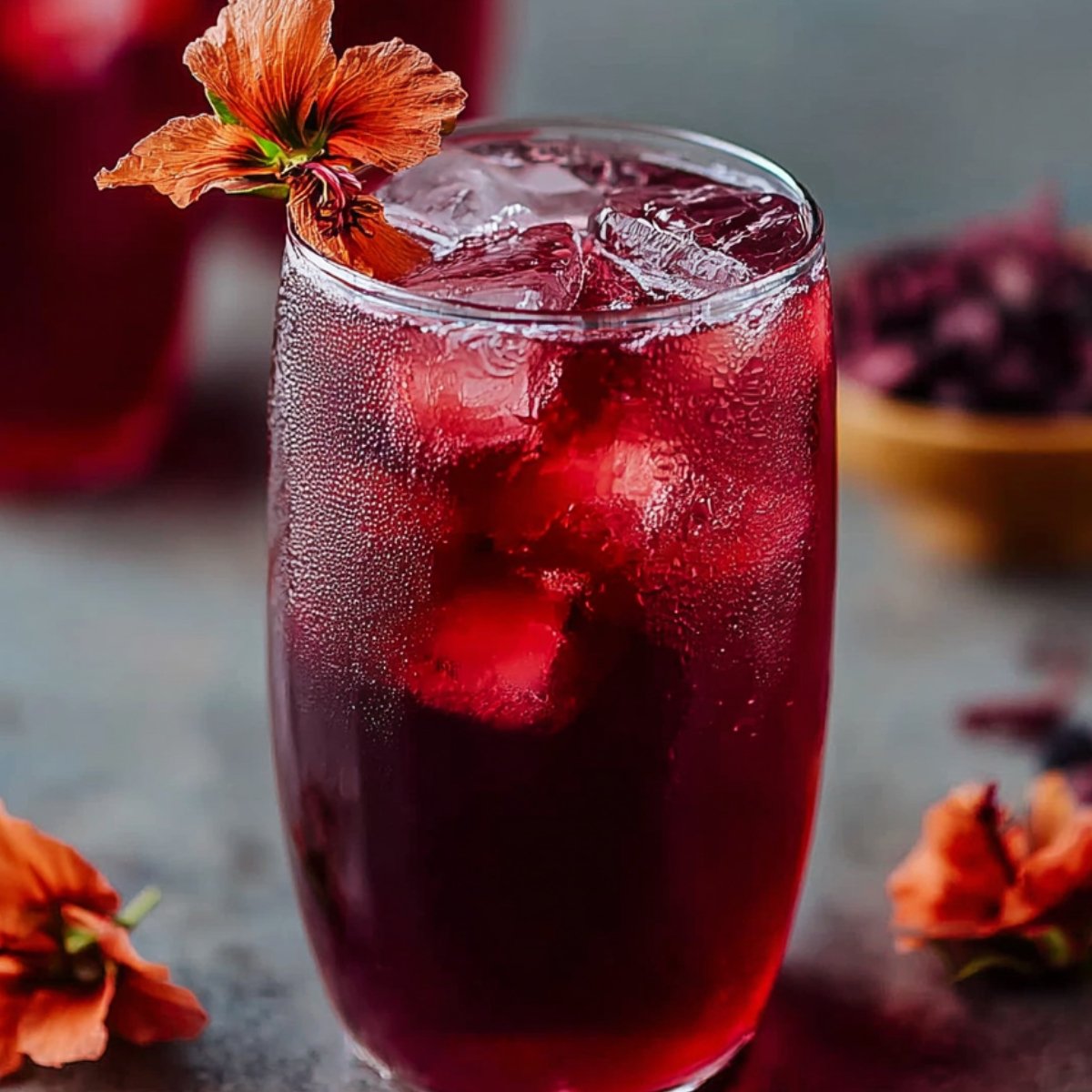
Why You'll Love This Hibiscus Tea Recipe
This hibiscus tea recipe brings café-quality herbal drinks to your kitchen using just one main ingredient - dried Hibiscus Tea Recipe petals. The deep red color is completely natural and makes every cup feel special, while the tart flavor provides that refreshing zing without any caffeine crash later. You can make it hot for cozy winter afternoons or brew it strong and serve over ice for summer refreshment.
What makes this recipe so appealing is how customizable it is to your taste preferences. The base Hibiscus Tea Recipeis naturally tart, almost like unsweetened cranberry juice, but you can add honey, agave, or other sweeteners to find your perfect balance. It's also caffeine-free, so you can enjoy it any time of day without worrying about it affecting your sleep. Plus, making it at home costs a fraction of what you'd pay for bottled versions at the store.
Jump to:
- Why You'll Love This Hibiscus Tea Recipe
- Ingredients for Hibiscus Tea Recipe
- How To Make Hibiscus Tea Recipe Step By Step
- Smart Swaps for Your Hibiscus Tea Recipe
- Delicious Twists on Hibiscus Tea Recipe
- Equipment For Hibiscus Tea Recipe
- Storing Your Hibiscus Tea Recipe
- The Recipe My Grandma Wouldn't Let Me Forget
- Top Tip
- Why This Recipe Works
- FAQ
- Ruby Red Wellness Made Simple!
- Related
- Pairing
- Hibiscus Tea Recipe
Ingredients for Hibiscus Tea Recipe
Basic Ingredients:
- Dried hibiscus petals
- Water
- Natural sweeteners
Optional Flavor Additions:
- Fresh ginger slices
- Cinnamon stick
- Fresh mint leaves
- Lemon or lime juice
- Orange slices
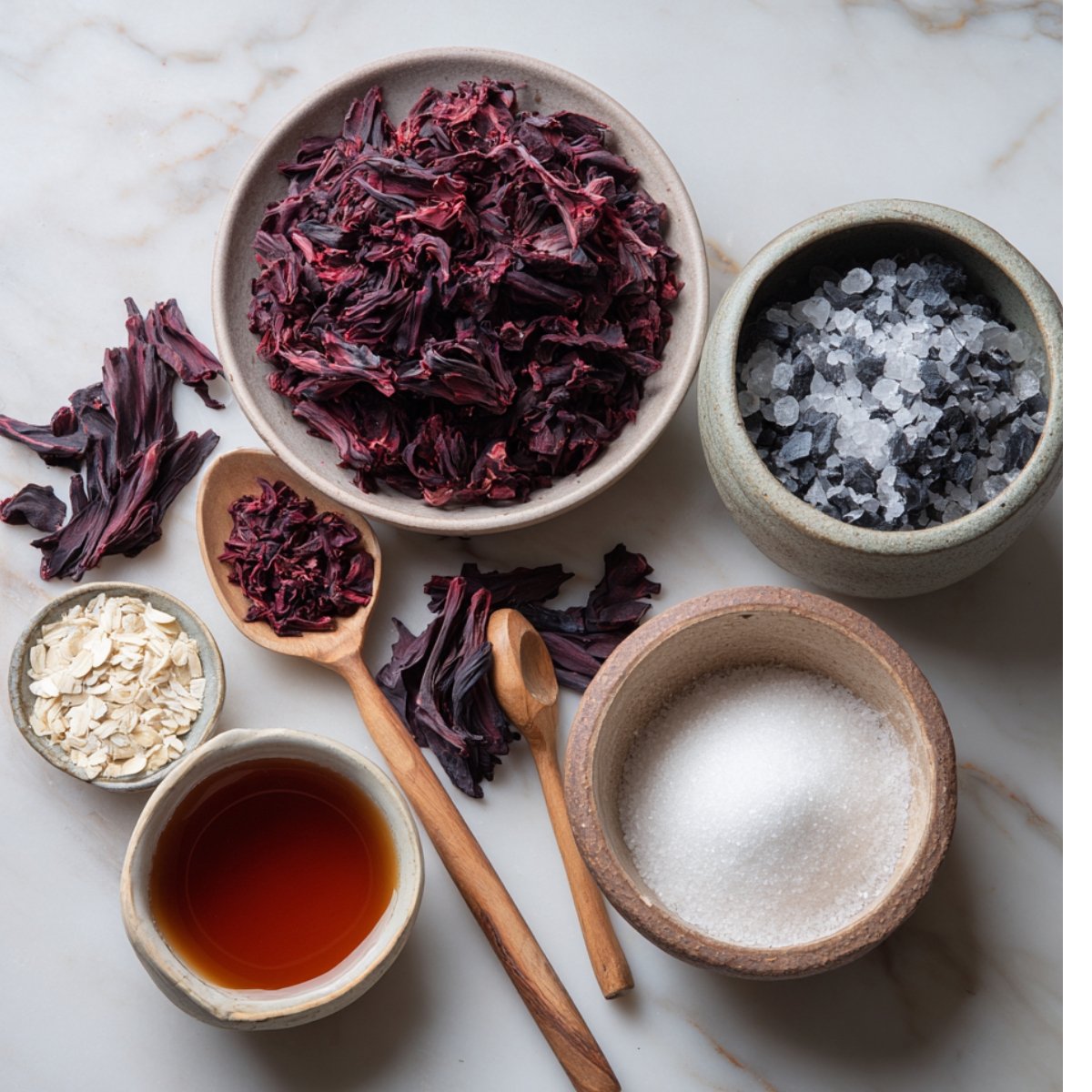
For Iced Version:
- Ice cubes
- Fresh fruit for garnish
- Sparkling water
Basic Equipment:
- Mugs or glasses
- Large pot or kettle
- Fine-mesh strainer or tea infuser
- Pitcher for iced tea
See recipe card for quantities.
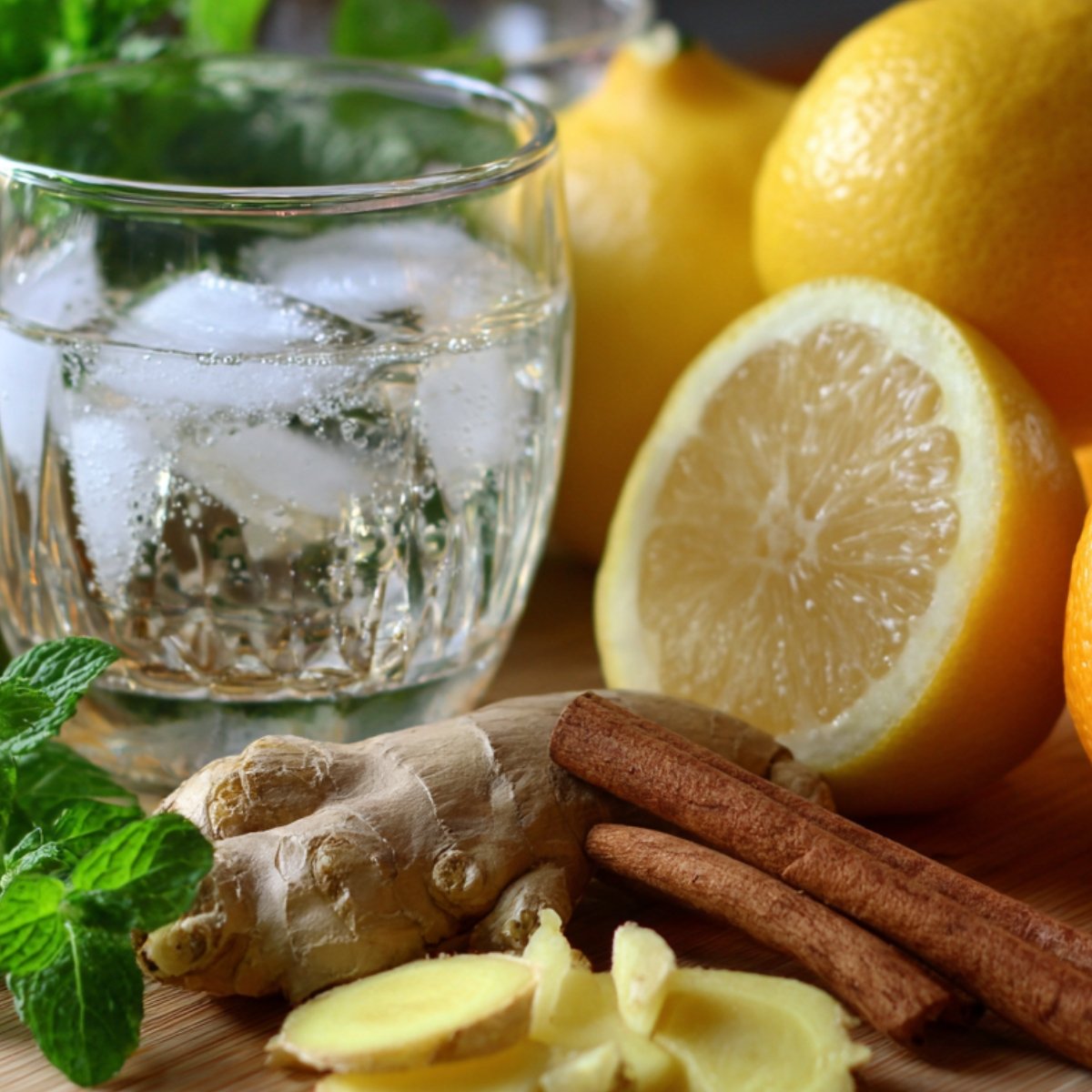
How To Make Hibiscus Tea Recipe Step By Step
Hot Hibiscus Tea:
- Bring water to a rolling boil in large pot
- Remove from heat and add dried hibiscus petals
- Steep 10-15 minutes for full flavor and color
- Strain out petals using fine-mesh strainer
- Add sweetener while tea is still hot
- Serve immediately in mugs
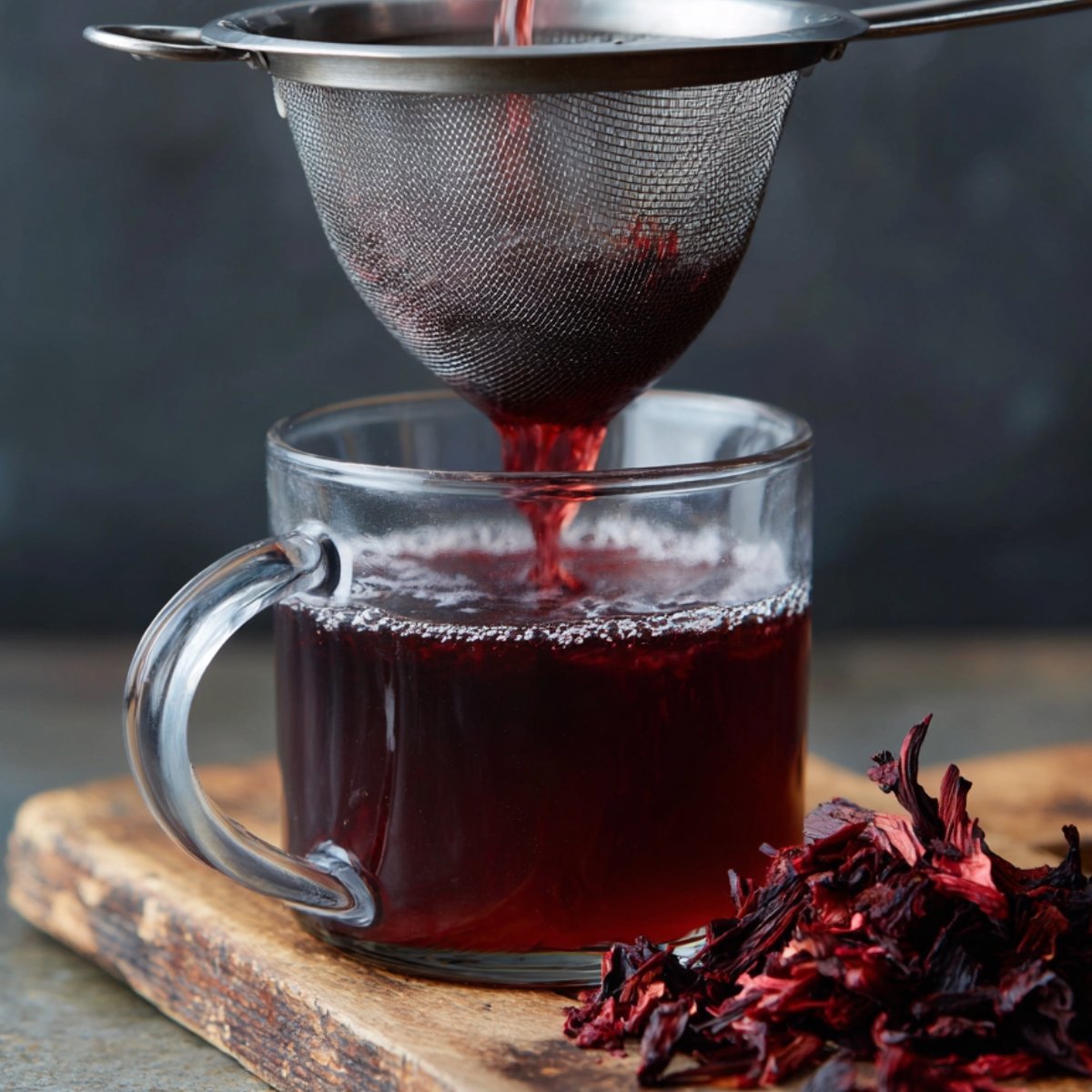
Cold Brew Method:
- Combine hibiscus petals with cold water in pitcher
- Refrigerate 2-4 hours for gentle extraction
- Strain and sweeten to taste
- Serve over ice
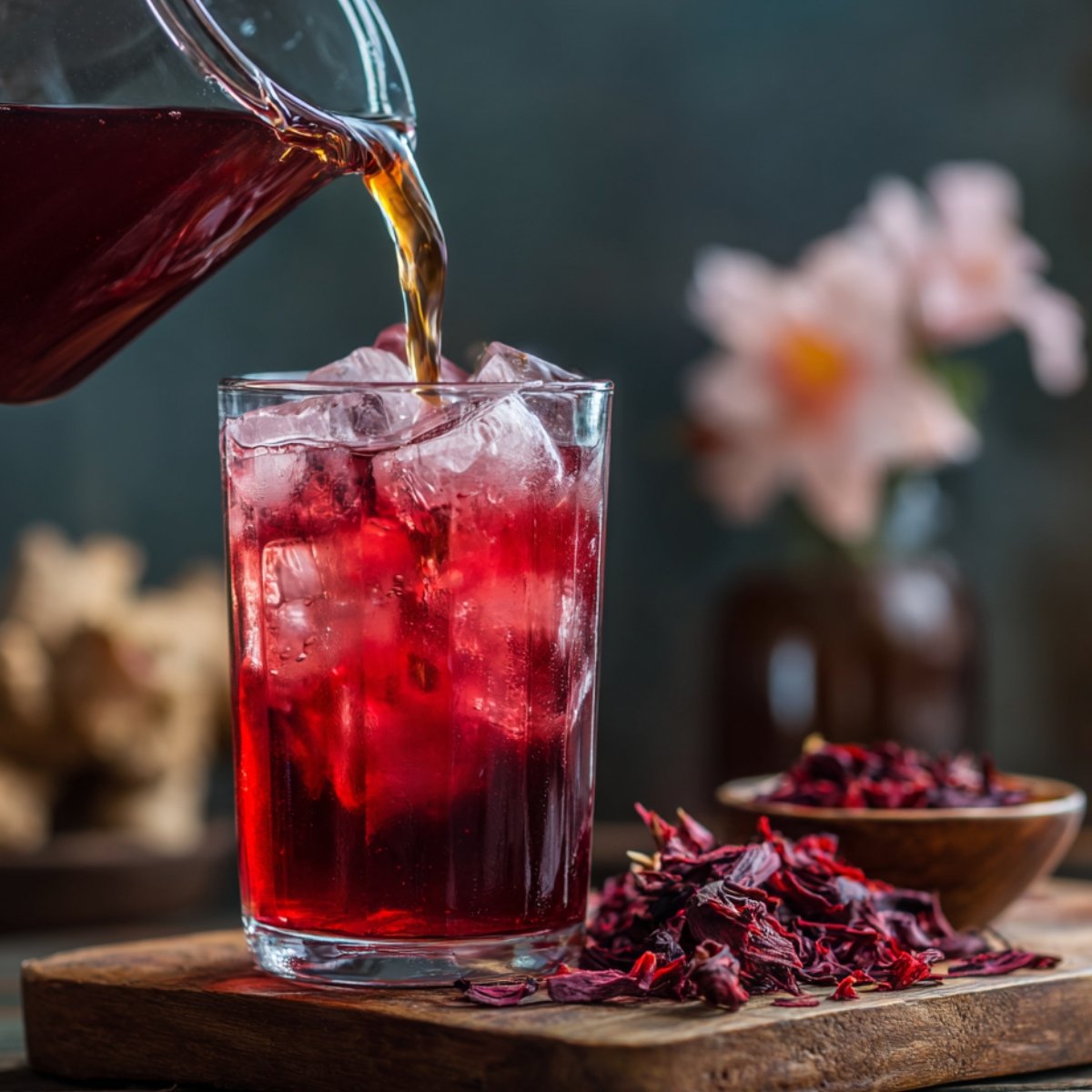
Quick Iced Tea:
- Make hot tea using double the hibiscus petals
- Strain and add sweetener while hot
- Pour over ice-filled pitcher
- Add cold water to dilute to taste
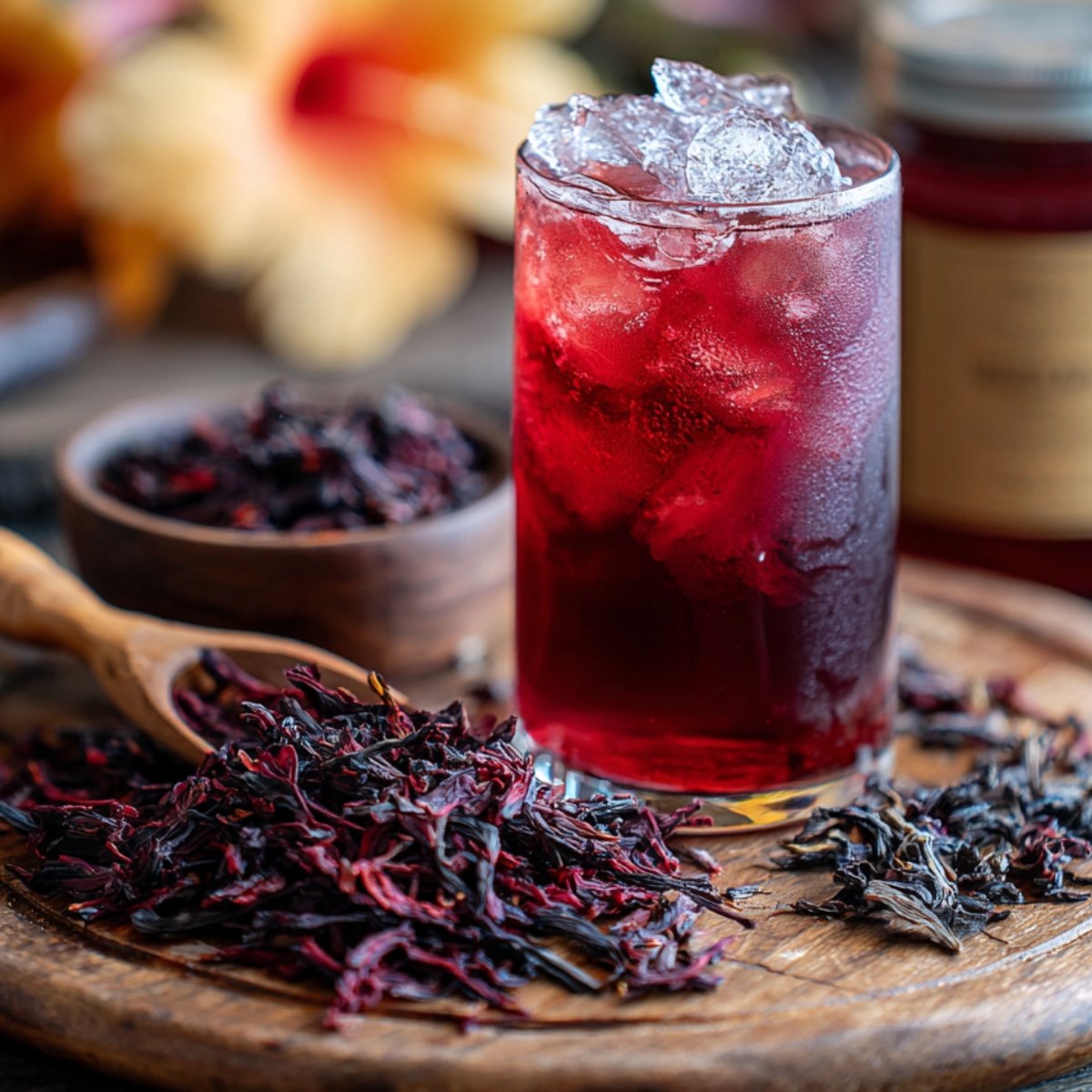
Flavor Additions:
- Float orange slices for garnish
- Add ginger or cinnamon during steeping
- Stir in fresh mint after straining
- Squeeze lemon or lime juice before serving
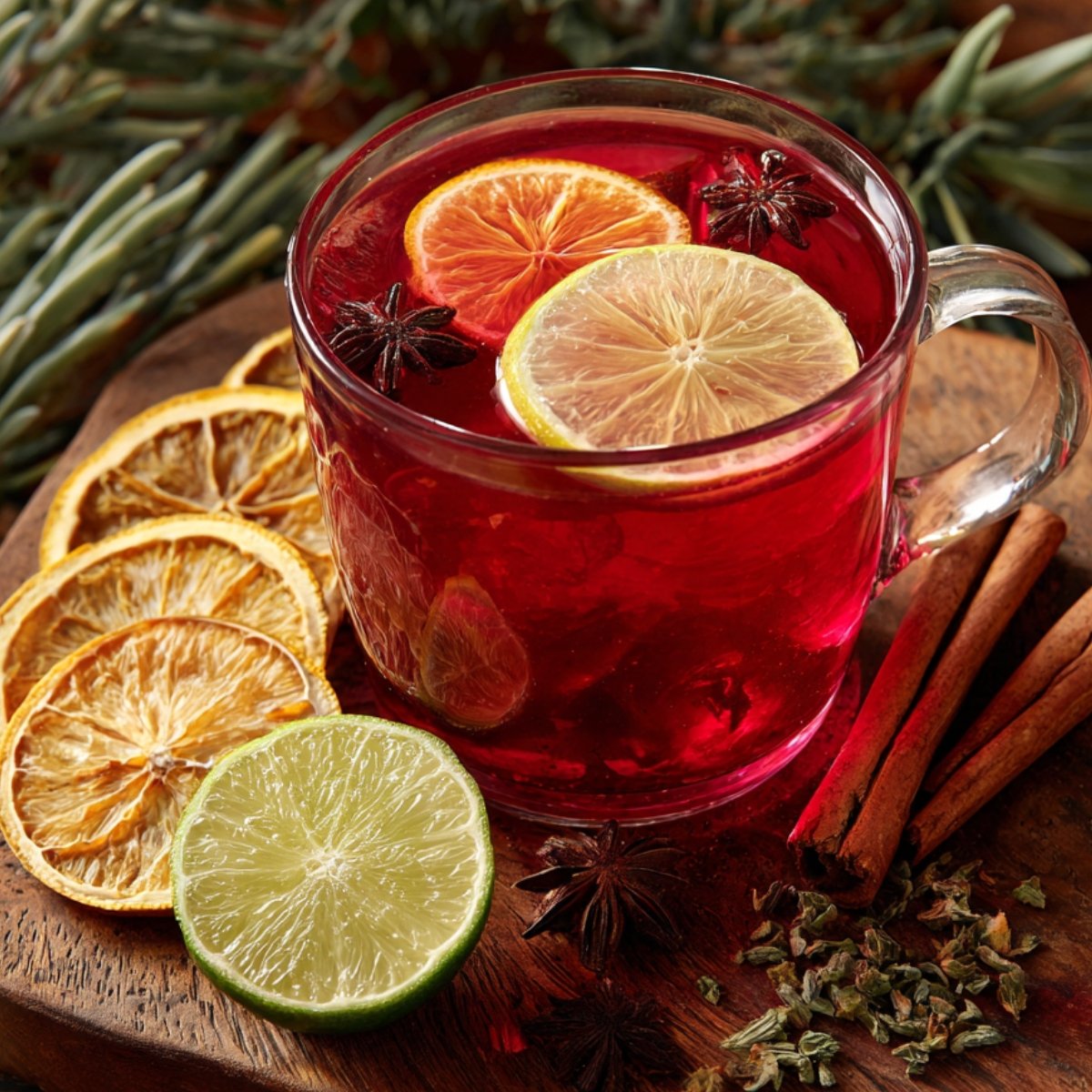
Smart Swaps for Your Hibiscus Tea Recipe
Sweetener Options:
- Honey → Agave nectar for vegan version
- Sugar → Stevia for sugar-free option
- Regular honey → Raw honey for more flavor
- Liquid sweeteners → Coconut sugar or brown sugar
Flavor Variations:
- Fresh ginger → Ground ginger (use less)
- Cinnamon stick → Ground cinnamon
- Fresh mint → Dried mint leaves
- Lemon juice → Lime juice or orange juice
Tea Strength Options:
- Regular strength → Double hibiscus for stronger flavor
- Full steeping time → Shorter steeping for milder taste
- Hot water → Room temperature water for gentler extraction
Serving Alternatives:
- Still water → Sparkling water for fizzy version
- Plain ice → Frozen fruit cubes
- Regular serving → Mix with other herbal teas
Availability Swaps:
- Pure hibiscus → Hibiscus blend teas
- Dried hibiscus → Fresh hibiscus flowers (use more)
- Loose petals → Hibiscus tea bags
Delicious Twists on Hibiscus Tea Recipe
Tropical Hibiscus Cooler:
- Add chunks of fresh mango and pineapple
- Include coconut water instead of regular water
- Garnish with lime wedges
- Perfect for summer parties
Spiced Hibiscus Chai:
- Add cinnamon stick, cardamom pods, and fresh ginger
- Include a pinch of black pepper
- Sweeten with honey
- Warming winter version
Citrus Hibiscus Refresher:
- Add orange and lemon slices during brewing
- Include fresh mint leaves
- Serve over ice with sparkling water
- Light and refreshing
Ginger Hibiscus Tonic:
- Steep with plenty of fresh ginger slices
- Add a touch of honey
- Serve hot or cold
- Great for settling stomachs
Berry Hibiscus Blend:
- Natural sweetness from fruit
- Mix with frozen berries while hot
- Let berries infuse as tea cools
- Creates beautiful color layers
Equipment For Hibiscus Tea Recipe
- Large pot or kettle for boiling water
- Fine-mesh strainer or tea infuser
- Pitcher for iced tea storage
- Measuring spoons
- Mugs or glasses for serving
Storing Your Hibiscus Tea Recipe
Hot Tea Storage:
- Drink fresh brewed tea within 2-3 hours for best flavor
- Keep in thermal carafe to maintain temperature
- Don't leave hot tea sitting all day - it becomes bitter
- Make fresh batches rather than reheating
Cold Tea Storage (3-5 days):
- Store in refrigerator in covered pitcher or mason jars
- Keep away from strong-smelling foods
- Don't add ice until serving to prevent dilution
- Strain out all petals before storing
Dry Ingredient Storage:
- Keep dried hibiscus petals in airtight container
- Store in cool, dark place away from sunlight
- Properly stored petals last 1-2 years
- Buy in small quantities for freshest flavor
Make-Ahead Tips:
- Prepare flavor additions separately
- Cold brew concentrate keeps longer than regular strength
- Make double-strength tea and dilute when serving
- Freeze tea in ice cube trays for flavored ice
The Recipe My Grandma Wouldn't Let Me Forget
My grandmother never made Hibiscus Tea Recipe- she was from a small farming town where herbal remedies were passed down through whispered conversations and handwritten notes tucked in recipe boxes. But she taught me the most important lesson about brewing any tea: patience and respect for the plant. When I was eight, she'd make me chamomile tea for bedtime, showing me how to pour the water just off boiling, how to cover the cup with a saucer to trap the steam, and most importantly, how to wait the full ten minutes even when I was impatient to drink it.
"Plants have their own timing," she'd say, watching the clock like a hawk. "You can't rush them to give up their goodness." Years later, when I discovered Hibiscus Tea Recipe at a health food store, I heard her voice in my head as I watched those dried petals turn the water that gorgeous ruby red. She would have loved the transformation - how something so dried and crumpled could create something so vibrant and alive. Now when I make hibiscus tea, I use her method: proper water temperature, full steeping time, and that same patience she taught me with chamomile.
Top Tip
- The secret to perfect hibiscus tea lies in water temperature and steeping time. Use water that's just off the boil - around 200°F - rather than rolling boiling water, which can make the tea overly bitter. The sweet spot for steeping is 10-12 minutes for a full-bodied cup with beautiful color, but don't go longer than 15 minutes or you'll extract too many tannins that create harsh, astringent flavors. If you want stronger tea, use more petals rather than steeping longer.
- The key to getting that gorgeous ruby-red color while maintaining good flavor is using the right ratio of hibiscus to water. Start with 2 tablespoons of dried petals per cup of water - this gives you a vibrant color and balanced tartness. Remember that hibiscus tea is naturally quite sour, similar to unsweetened cranberry juice, so have your sweetener ready to taste and adjust. The tea is best when it's either very hot or very cold lukewarm hibiscus tea doesn't taste as good and loses some of its refreshing appeal.
Why This Recipe Works
This hibiscus tea recipe succeeds because it uses the proper extraction method to draw out the maximum flavor and beneficial compounds from the dried petals without over-extracting bitter tannins. The water temperature of around 200°F is hot enough to release the anthocyanins (the compounds that create the beautiful red color and antioxidant properties) but not so hot that it destroys the delicate floral notes or creates harsh astringency. The 10-12 minute steeping time allows complete extraction of the water-soluble compounds while preventing the breakdown of beneficial nutrients.
The ratio of petals to water creates the perfect balance between flavor intensity and palatability. Hibiscus naturally contains organic acids like citric acid and malic acid, which give it that tart, cranberry-like flavor. These acids also help preserve the tea naturally and contribute to its refreshing quality. The steeping process releases these acids gradually, building flavor layers that develop over time rather than hitting you with harsh sourness all at once. This gentle extraction method preserves both the health benefits and the complex flavor profile that makes hibiscus tea so appealing compared to artificially flavored alternatives.
FAQ
How do you make hibiscus tea?
To make hibiscus tea, bring water just to boiling, pour over dried Hibiscus Tea Recipe petals (about 2 tablespoons per cup of water), and steep 10-12 minutes. Strain out the petals and add sweetener to taste while hot. For iced tea, make it stronger and pour over ice to prevent dilution.
What not to mix with hibiscus tea?
Avoid mixing Hibiscus Tea Recipe with medications for blood pressure, as it may enhance their effects. Also, don't combine with extremely acidic ingredients like large amounts of citrus, which can make it too tart. Iron supplements should be taken separately as the tea can interfere with iron absorption.
What happens if I drink hibiscus tea daily?
Many people drink hibiscus tea daily without issues, but it's naturally high in acids and may affect blood pressure. Some people experience stomach upset from daily consumption. As with any herbal tea, moderation is key. Consult a healthcare provider if you're on medications or have health concerns.
What can you add to Hibiscus Tea Recipe to make it taste better?
Natural sweeteners like honey or agave work well to balance the tartness. Fresh ginger adds warmth, mint provides cooling freshness, and citrus fruits enhance the natural tang. Cinnamon, cardamom, or berries also complement the floral flavor beautifully.
Ruby Red Wellness Made Simple!
Now you have all the secrets to making perfect hibiscus tea recipe from proper steeping temperatures to timing that extracts maximum flavor without bitterness. This vibrant herbal drink proves that healthy beverages don't have to sacrifice taste, delivering refreshing satisfaction whether you serve it hot in winter or iced in summer.
Craving more nourishing drink options? Try our Delicious Naan Bread Recipe that pairs wonderfully with herbal teas for afternoon snacks. Want something indulgent after your healthy tea? Our The Best Chocolate Pie Recipe provides the perfect rich contrast. Looking for another comforting recipe? Our Easy Creamy Smothered Chicken And Rice Recipe creates satisfying meals that complement this refreshing tea perfectly!
Share your hHibiscus Tea Recipe success! We love seeing your beautiful ruby-red creations and creative flavor combinations!
Rate this recipe and join our wellness community!
Related
Looking for other recipes like this? Try these:
Pairing
These are my favorite dishes to serve with Hibiscus Tea Recipe

Hibiscus Tea Recipe
Ingredients
Equipment
Method
- Bring 4 cups of water to a rolling boil in a large pot or kettle.
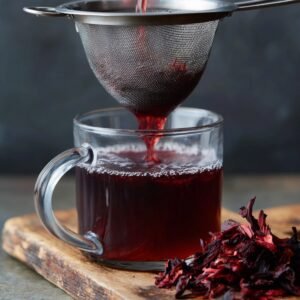
- Remove from heat and add ½ cup dried hibiscus petals.
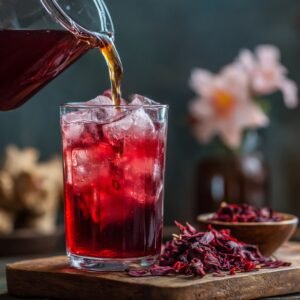
- Cover and steep 10-15 minutes (hot brew) or 2-4 hours (cold brew).
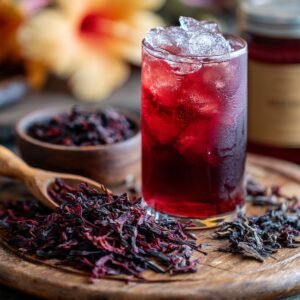
- Strain petals using fine-mesh strainer; add honey, agave, or sugar.
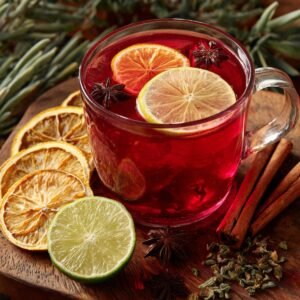
- Enjoy hot in mugs or pour over ice and dilute with cold water if needed.
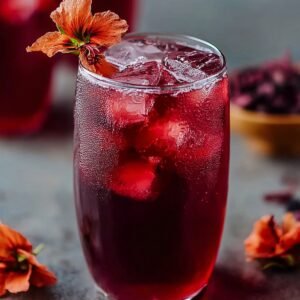

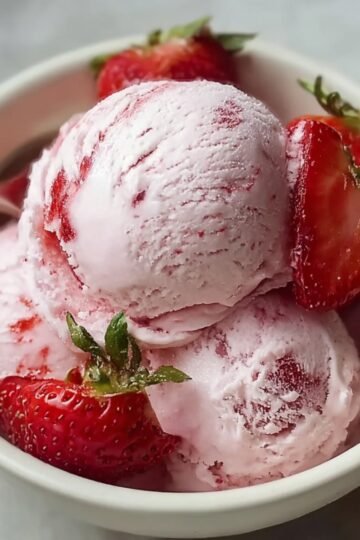


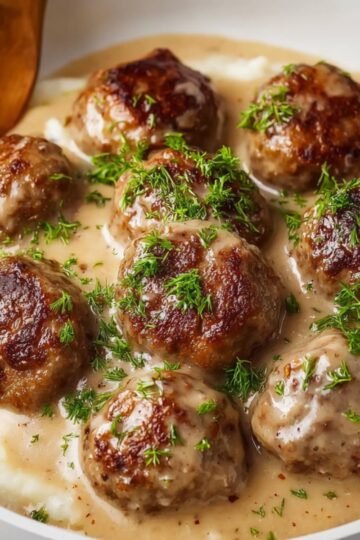
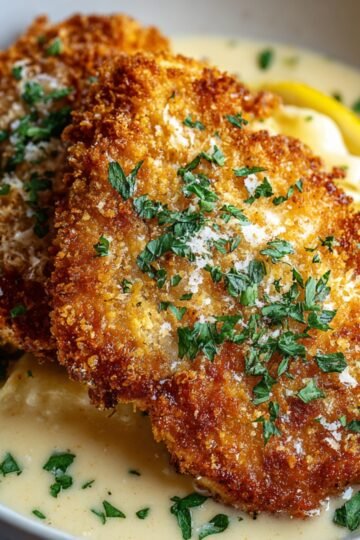
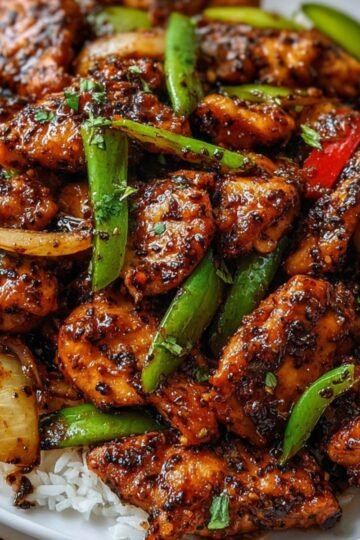
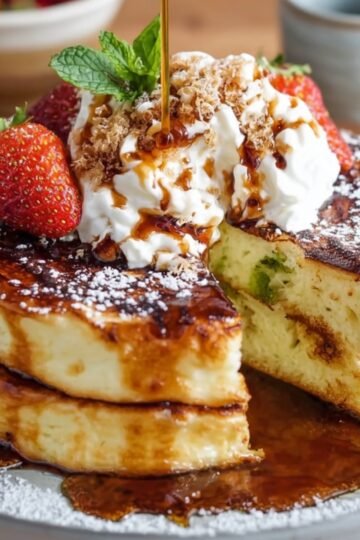
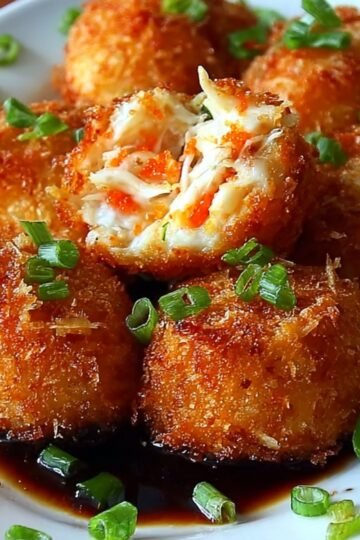
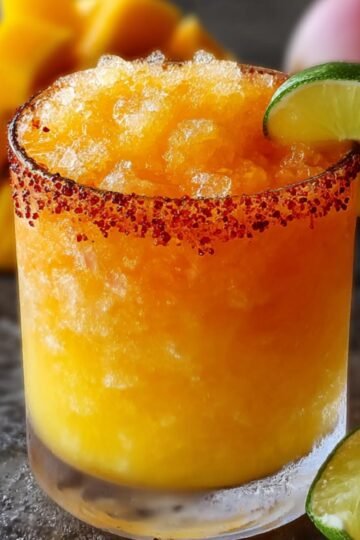
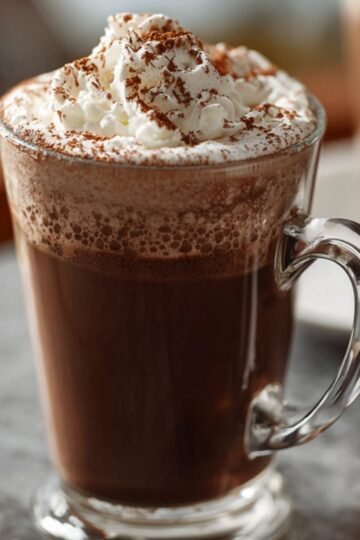
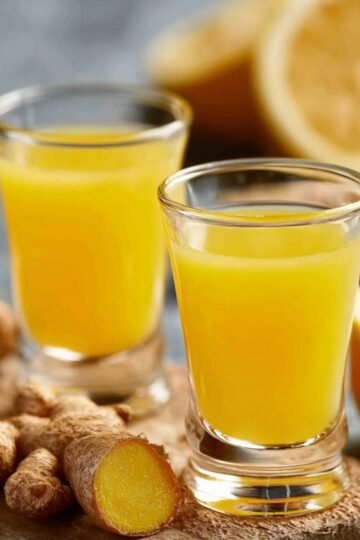
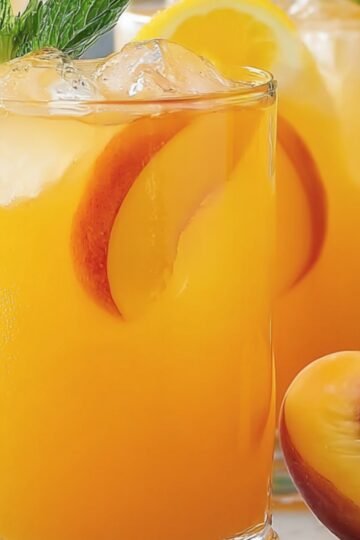
Leave a Reply